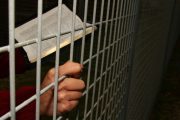In the deepening morass that is the Syrian Civil War, where Russia, the United States, and several other international powers have been bombing and otherwise choosing sides from a bewildering roster of combatants — the Assad regime, ISIS, Kurds, Al-Qaida sympathizers, the Free Syrian Army, and countless others — U.S.-backed insurgents have recently begun engaging a new foe: U.S.-backed insurgents.
Not surprisingly, given the complexity of the situation on the ground, two entirely different groups of insurgents, backed by different factions within the U.S. military establishment for entirely different motives, have begun shooting at each other in the increasingly desperate, multi-sided battle unfolding to the north of Syria’s second-largest city, Aleppo. The two Syrian factions, Fursan al-Haq (Knights of Righteousness) and the Syrian Democratic Forces, clashed first in the town of Marea, about 20 miles north of Aleppo, in mid-February, with the latter running the former out of town. Over the next several weeks, similar clashes occurred in the town of Azaz and in the Aleppo neighborhood of Sheikh Maqsud. The rub? Fursan al-Haq is supported by the CIA, and the Syrian Democratic Forces are supported by the Pentagon. The Syrian Democratic Forces are in fact a coalition that includes militias deemed to be pro-democracy, that was cobbled together by the Pentagon itself.
The two factions were created and supported for two different reasons. Fursan al-Haq is being used by the CIA to put pressure on the Assad regime, in hopes of forcing it from power, while the Syrian Democratic Forces are being used by the Pentagon to fight ISIS.
In the beginning, Fursan al-Haq operated far to the west of the Syrian Democratic Forces, engaging directly with government forces nearer to Assad’s stronghold, the capital Damascus. The Syrian Democratic Forces were mostly engaged in Syria’s east, trying to stem the ISIS tide. But thanks to several months of heavy bombing by the Russians, anti-Assad forces have been weakened in the Aleppo area, allowing the Syrian Democratic Forces to move into the area. The fact that the Syrian Democratic Forces are mostly Kurdish-led has also antagonized anti-Assad militias backed by the CIA — which are mostly Arab and regard the expansion of Kurdish territorial control as a threat as great as that posed by the Assad regime.
“Fighting over territory in Aleppo demonstrates how difficult it is for the U.S. to manage these really localized and in some cases entrenched conflicts,” Nicholas A. Heras, an expert on the Syrian civil war, told the Tribune News Service. “Preventing clashes is one of the constant topics in the joint operations room with Turkey.”
Though the word “quagmire” is overused, there is no doubt that Syria has become one. American foreign policymakers, stubbornly refusing to learn from quagmires past, from Korea and Vietnam to Iraq, continue trying to bomb Syria out of the Stone Age, in the vain hope that, the more blood we are complicit in shedding, the more Syrians will unite under our leadership and usher in a new era of freedom and prosperity.
Unfortunately, the current field of presidential candidates seem bent on perpetuating the United States’ involvement in the Syrian conflict — as if the escalation of bombing or the insertion of ground troops will somehow transform the mindset of a populace who has been at war with itself for centuries.




